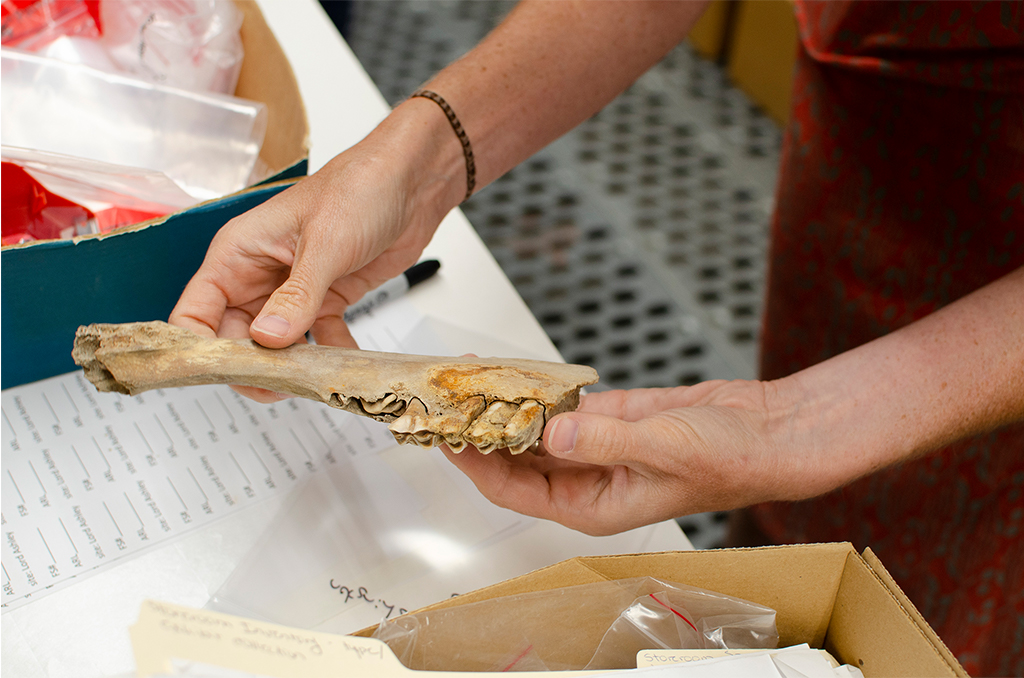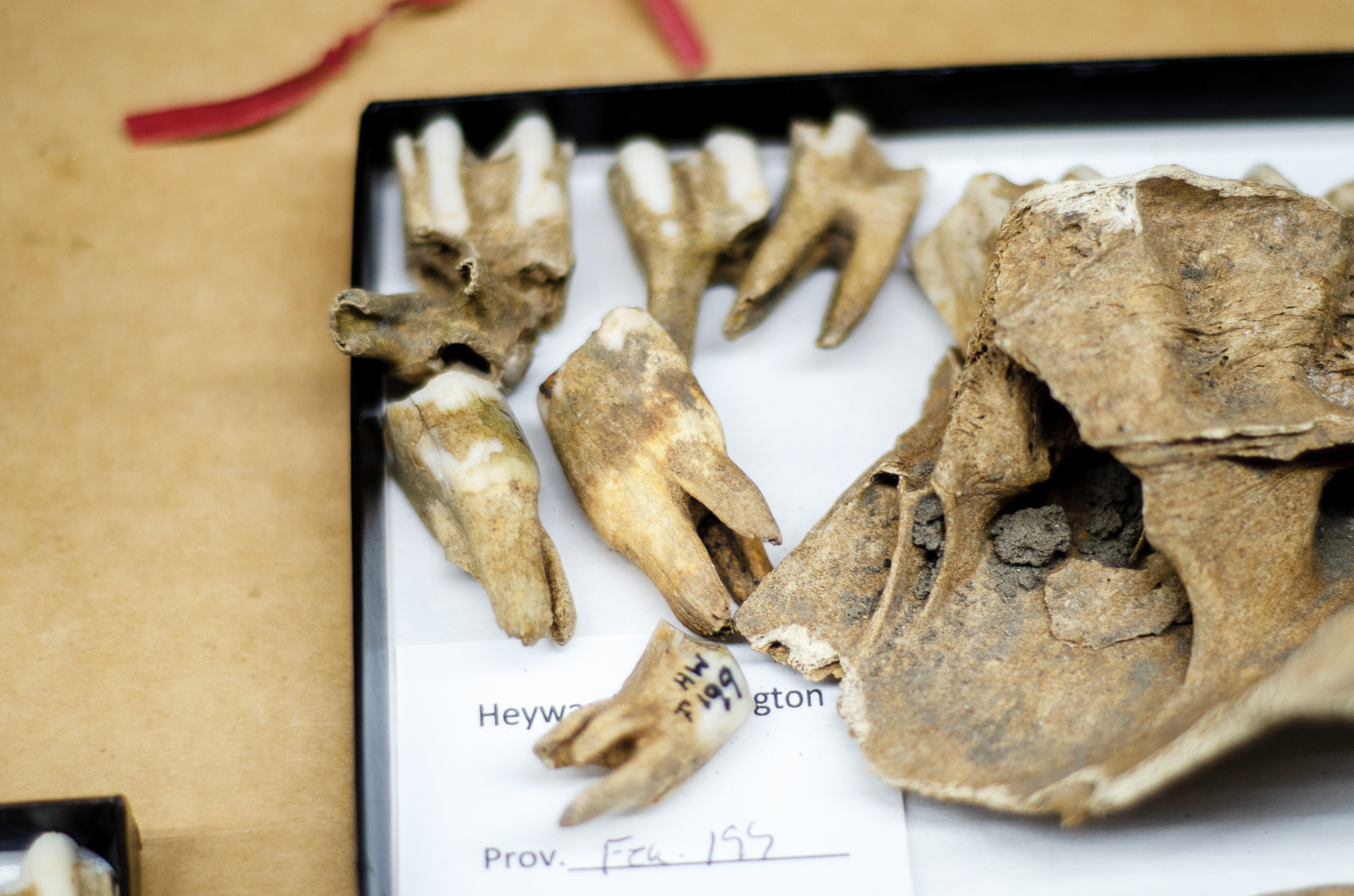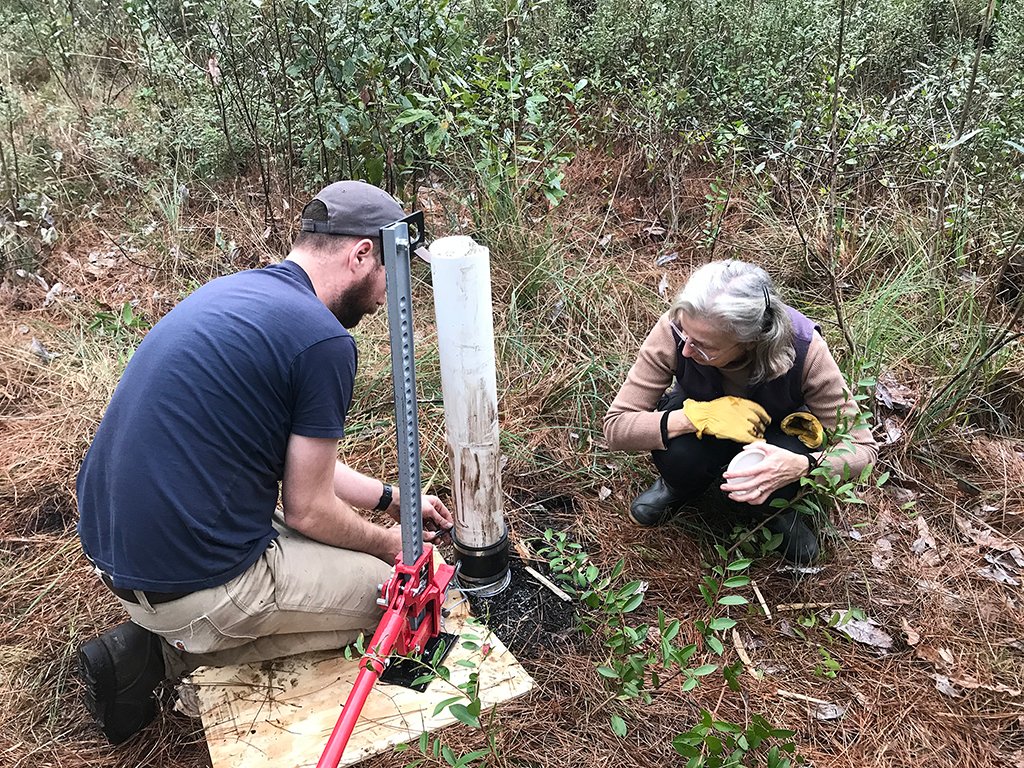Exploring the Cattle Economy of Colonial South Carolina – an Update

Animal remains in The Charleston Museum’s archaeology collection.
If you watched our Facebook Live events of the past few months you are familiar with our National Science Foundation-funded project to expand our study of the cattle-ranching economy in colonial South Carolina. We visited the Museum’s collections storage and peered into boxes of animal bones from the Heyward-Washington House. We then headed to I’On Swamp in the Francis Marion National Forest to look at the landscape where cattle grazed in the 18th century. At the heart of our study are teeth, specifically the lower third molar, from cattle remains, selected for extraction of stable isotopes. Archaeological collections held by The Charleston Museum form the core of this study, augmented by specimens loaned from Drayton Hall, Brockington and Associates, South Carolina State Parks, Recreation and Tourism, the South Carolina Archaeological Research Program, and South Carolina Insitute of Archaeology and Anthropology, among others.
The first English colonists arrived in Carolina in 1670. Soon, cattle were thriving in the Lowcountry’s pinewoods, savannahs, canebrakes, and marshes. Cattle were largely free-range, receiving little or no shelter or supplemental feed. Lowcountry cattle foraged on cordgrass, salt grasses, and Spanish moss in upland pine communities, small-stream floodplains, and hardwood bottomlands. They particularly were fond of canebrakes, where they grazed year-round (and where we stood for our second Facebook Live event). Thomas Nairne in 1708 claimed some settlers had 1,000 cattle and that herds of 200 head were common.
In an annual cycle, fields were burned in winter to improve forage, beef cattle were rounded up for slaughter in the fall, and the meat salted. Live cattle, preserved meats, and hides were sent from cowpens to Charleston and then to other markets. Most of the cattle arrived in the city along the Broad Path, the road along the peninsula that became King Street. Cattle ranching remained profitable even after rice became South Carolina’s principal export, though the center of livestock production moved from the Lowcountry to the Sandhills.
Both Europeans and Native Americans served as cattle hands, but the task of managing cowpens, rounding up free-range animals and driving cattle to market in Charleston largely fell to Africans. Of the 1,800 enslaved adult men in South Carolina in 1708, nearly a thousand were “cattle-hunters”. As the name suggests, lowcountry cattle could be semi-feral and challenging to manage.

Cattle teeth in The Charleston Museum’s archaeology collection used in this project.
The NSF project builds on our three-plus decades of zooarchaeological analysis, a familiar topic for those who follow archaeology at The Charleston Museum. Dr. Elizabeth Reitz’s identification of the animal bones from both urban and rural colonial sites shows the importance of cattle. Beef was the dominant source of meat in Charleston. High degrees of skeletal completeness suggest many animals were raised near, or even within, the city and perhaps were butchered on urban properties. The young age at death suggest cattle were slaughtered for meat and a prime age.
Our project moves us from studying beef that Charlestonians consumed to cattle that Carolinians raised. We hope to identify sources of cattle using stable isotopes. Dr. Carla Hadden at the University of Georgia’s Center for Applied Isotope Studies is extracting samples from 93 cattle teeth, recovered in well-provenienced and closely-dated contexts from 18 urban sites and 14 rural ones, dating from the 1670s through the late 1800s. Stable isotopes reflect what cattle ate and drank, where they lived, and how they were managed. Oxygen (O) isotope ratios reflect sources of drinking water. Carbon (C) and nitrogen (N) isotopes reflect the types of plants consumed, potentially distinguishing between intentional foddering and free-range forage. Overgrazing, clearing forests, burning pastures, and draining wetlands also influence carbon and nitrogen isotopes. Strontium (Sr) reflects the local bedrock, enabling us to distinguish between animals raised on the coastal plain and those in the Piedmont or outside the Carolina colony.
Dr. Laurie Reitsema, also of University of Georgia, conducted our first isotope analysis in 2015. Dr. Hadden then conducted a pilot study of 15 teeth from the Heyward-Washington house in 2018, as part of Sarah Platt’s dissertation research. Here we learned that some animals drank surface water, while others drank from highly evaporated sources, such as water troughs or stagnant ponds. Three of the 15 teeth combined high nitrogen ratios with high carbon and oxygen, suggesting these animals grazed within an enclosure and consumed trough or stagnant water. Dr. Hadden’s – and everyone’s – current analysis has been slowed by Covid-19 pandemic and closure of university facilities, but she is back in the lab now. We’re all looking forward to results.

Dr. Grant Snitker (left) and Martha Zierden, Curator of Historical Archaeology, (right) extracting a core soil sample.
Documentary and environmental studies suggest the enslaved Africans who worked as cow hunters were intimately familiar with the small-stream floodplains that were later transformed into inland swamp rice fields. Dr. Hayden Smith of the College of Charleston is conducting a detailed land-use study of areas known to graze cattle, focusing on savannahs, high open areas of grasslands, remnants of “old fields” created by native peoples. A recent addition to the project is a soil coring project by Dr. Grant Snitker. Soil cores from freshwater peat/marsh contexts will establish a vegetation and fire history for the region as cattle, fires, timbering, and rice cultivation altered the landscape and the economy. Already C14 samples from the Hell Hole swamp core date the lowest levels to 29,000 years ago. The upper 13cm produced a date of AD 1470-1650, and it is here we are focusing our study, with the help of the U.S. Forest Service.
Finally, no Charleston study would be complete without artifacts and data from the Heyward-Washington House. Some of the faunal remains from the extensive 1970s excavations have been analyzed (that study produced the parrot and guinea pig that we highlighted earlier). But much more remains for study, including materials from the work yard dating to the mid-18th century Milner occupation. These bones will be analyzed by Dr. Barnet Pavao-Zuckerman of University of Maryland and Dr. Reitz at University of Georgia.
Over the next year or so we’ll be sharing the results of our studies in a variety of ways. Look for updated blog posts, additions to exhibitions, new interpretation at the Heyward-Washington House, and new Bragg Boxes from our Education department.
-Martha Zierden, Curator of Historical Archaeology, July 2020
A special thank you to the National Science Foundation for the support of this ongoing project.


